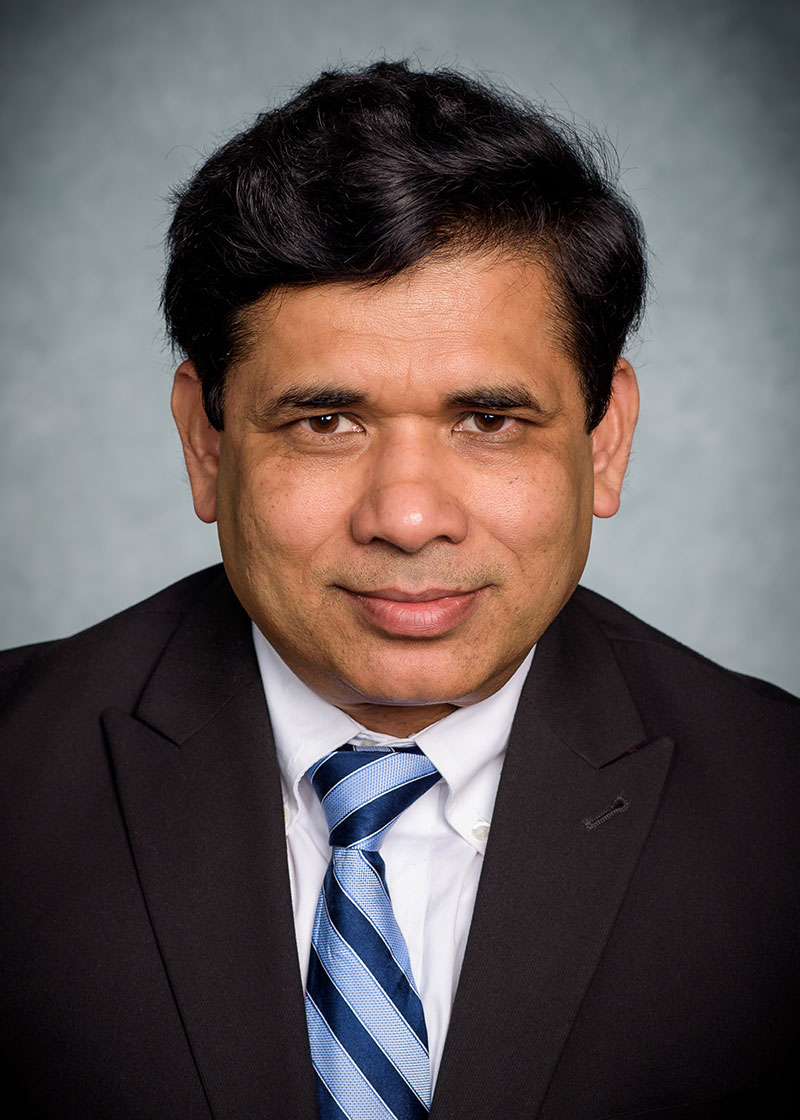Broad research focus?
My research interests in statistics broadly include survival analysis, recurrent event analysis, non-parametric Bayesian inference, agreement measures, and statistical methods for biomedical applications. Though I have been working on many interdisciplinary research projects, a significant portion of my recent work addresses acute kidney injury (AKI), chronic kidney disease (CKD), and effects of intensive blood pressure lowering on the risk of atrial fibrillation, left atrial remodeling, and heat rate variability in the Systolic Blood Pressure Intervention Trial (SPRINT). I have also been involved in two multi-center clinical trials as the PI of the data coordinating center and the lead statistician.
Why Public Health?
After finishing my PhD in statistics from the University of South Carolina, I participated in a biostatistics post-doctoral fellowship at Emory. This post-doctoral experience really shaped my career trajectory, leading me to seek out faculty positions in biostatistics rather than a math or statistics department. During my post-doc, I realized how collaborative and interdisciplinary biomedical and public health research are. Today's research enterprise requires close collaboration with biostatisticians and the SOPH at UAB is known for its collaborative research excellence.
An exciting ongoing project?
I am currently working on a project to develop an equation for estimating baseline creatinine levels in children admitted to the hospital. Children's creatinine levels are not routinely assessed at wellness visits, so baseline levels are unknown for more than half of hospitalized children. However, a baseline reading is needed to diagnose an AKI episode. By the time a child arrives at the hospital, their creatinine is already elevated and cannot ideally serve as their baseline level. Therefore, we currently lack a well-accepted method for estimating baseline creatinine and diagnosing AKI in children. To fill this gap, colleagues and I are using data from ~2,000 electronic medical records to retrospectively validate an equation for estimating baseline creatinine in pediatric populations.
A favorite conference to attend?
My favorite conference is the Joint Statistical Meeting, which is the largest national and international conference for statisticians (over 6,000 attend). Because it is so well attended, the meeting provides an excellent opportunity to network, learn about the latest, and interact with statisticians who specialize in every possible area. Many of the faculty in our department make a point to attend each year.
A favorite (self-authored) manuscript?
Conventional agreement measures, such as concordance correlation coefficient (CCC) and kappa coefficient, are limited to assessing agreement between variables on the same scale (e.g., both variables are continuous). However, characterizing the agreement between an ordinal variable and a continuous variable is often of interest in many studies. Broad Sense Agreement (BSA) is a notion of overall agreement that measures the correspondence between an ordinal variable and a continuous variable. A limitation of BSA is a loss of precision when applied to heterogeneous populations due to the variation in BSA among different sub populations. For example, mental health disorders, such as PTSD, are typically prone to large population heterogeneity as manifested by highly variable disease phenotypes. However, the changing pattern of BSA with a covariate may not be linear. Statistical tools that can uncover the heterogeneity in agreement measures, as explained by allowing non-linear covariate effects, are needed to enhance our understanding of the connections between instruments and guide the design of future studies. Therefore, we developed a robust non-parametric regression model of BSA to allow for non-linear covariate effects.
Any research ideas that are on your wish list?
I would love to spend more time on methodological work in the area of recurrent competing risk models, in particular, nonparametric and semiparametric Bayesian inference. In addition, I would like to learn and apply more machine learning tools in statistical inference.
If not academia, then...?
I have always wanted to be in academia. I have a family history of teaching. However, perhaps I would like to work in the pharmaceutical industry.
